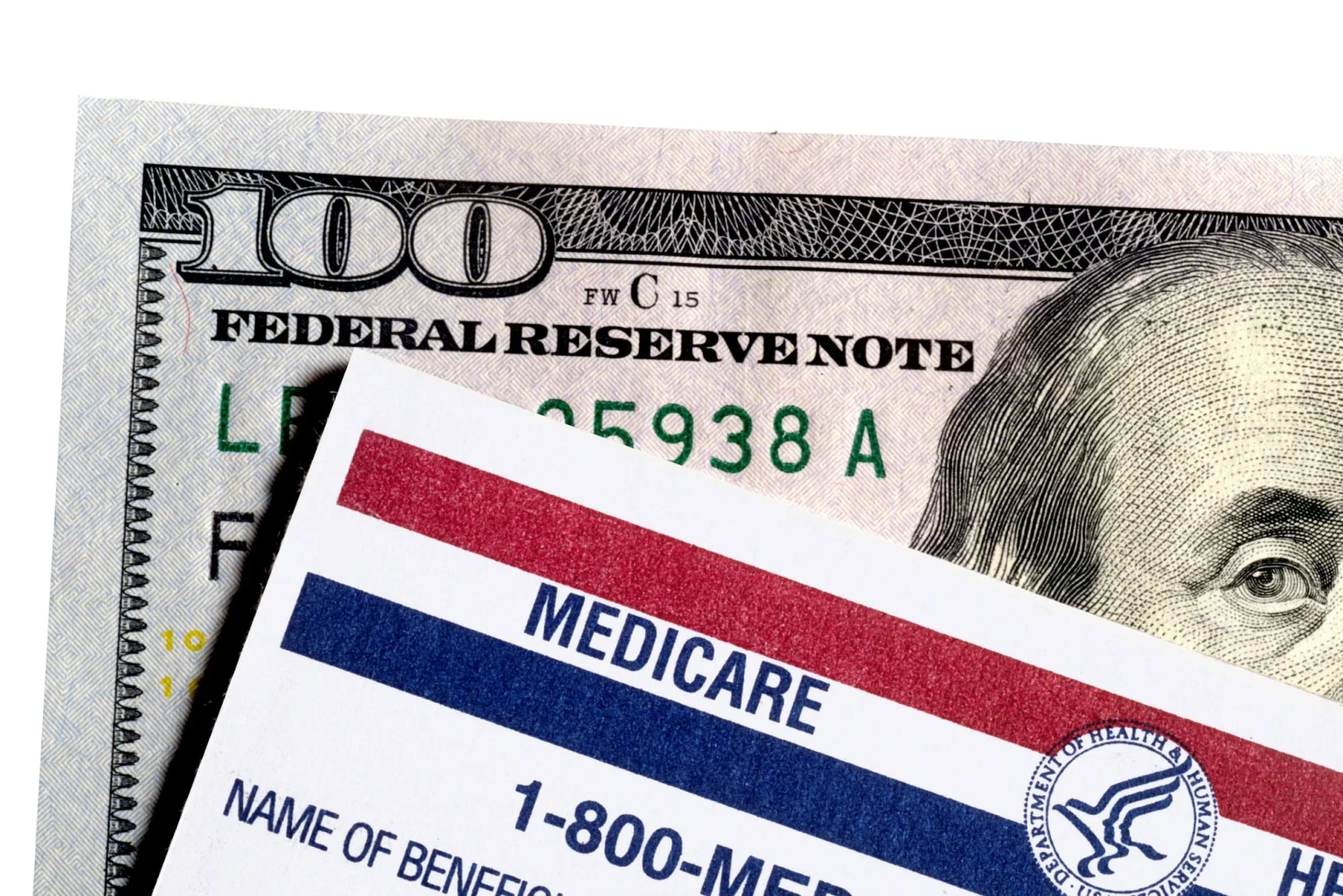2025 Medicare Changes That Could Hit Your Wallet HARD
Medicare Moments


Audio By Carbonatix
By Jennifer Otto, Senior Resource
As the Medicare Annual Open Enrollment Period is underway, major changes are on the horizon that could dramatically affect the healthcare and finances of millions of Americans. With new policies influenced by the Inflation Reduction Act, significant shifts in prescription drug coverage and Medicare Advantage plans are set to take effect. These changes will impact premiums, deductibles, and out-of-pocket costs, leaving many seniors uncertain about how to manage them.
As the Medicare Annual Open Enrollment Period continues (AEP runs every year from October 15 to December 7), it’s time for Americans to really understand what these changes mean, especially when it comes to prescription drug coverage and Medicare Advantage plans. With new policies influenced by the Inflation Reduction Act and significant shifts coming in 2025, Medicare beneficiaries must be prepared to make some decisions about their healthcare coverage.
With a shift in power in Washington, we’re seeing a wave of changes that could significantly impact the 67.7 million Americans currently on Medicare. As policymakers debate the future, the upcoming changes in Medicare are poised to reshape how seniors access and pay for their healthcare. Here’s what every American needs to know:
The Inflation Reduction Act
The Inflation Reduction Act is shaking things up, particularly for Medicare Part B and Part D. While aimed at reducing overall costs, these changes also come with increased premiums and deductibles and altered pharmaceutical coverage that demand attention. It’s worth paying attention to!

How It’s Affecting Medicare Part B
One of the most immediate changes is the increase in monthly premiums, which is set to rise by $10.30 for individuals with average incomes of $106,000 and couples filing a joint tax return with incomes of $212,000. Part B is now $185 per month. For incomes higher than $106,000 for an individual or $212,000 for a couple, the premiums have increased substantially. While this might seem like a minor adjustment, it’s going to have a substantial impact on those relying on a fixed income.
Increased Premiums
The increase in Medicare Part B and D IRMAA (Income Related Monthly Adjustment Amount) premiums is a direct result of the Inflation Reduction Act’s efforts to balance costs across the healthcare system. For many seniors, this necessitates a reevaluation of their monthly budgets. Individuals earning more than $106,000 or couples earning more than $212,000 will have to pay higher premiums for their Medicare Part B and D IRMAA. Below are the Medicare Part B and D premium costs for 2025, whether through a Medicare Advantage Plan with Part D or a stand-alone Part D Plan.
Part B (Medical Insurance) 2025 Monthly Premium
| If your Yearly Income is __________, File Individual Tax Return | If Your Yearly Income is __________, File Joint Tax Return | Monthly Premium You Pay |
|---|---|---|
| $106,000 or below | $212,000 or Below | $185 |
| $106,000.01 – $133,000 | $212,000.01 – $266,000 | $259 |
| $133,000.01 – $167,000 | $266,000.01 – $334,000 | $370 |
| $167,000.01 – $200,000 | $334,000.01 – $400,000 | $480.90 |
| $200,000.01 – $500,000 | $400,000.01 – $750,000 | $591.90 |
| $500,000.01 + | $750,000.01 + | $628.90 |
Source: cms.gov
Part C (Medicare Advantage) and Part D (Medicare Prescription Drug) 2025 Monthly Premiums
| If your Yearly Income is __________, File Individual Tax Return | If Your Yearly Income is __________, File Joint Tax Return | Monthly Premium You Pay |
|---|---|---|
| $106,000 or below | $212,000 or Below | Your plan premium |
| $106,000.01 – $133,000 | $212,000.01 – $266,000 | $13.70 + Your plan premium |
| $133,000.01 – $167,000 | $266,000.01 – $334,000 | $35.30 + Your plan premium |
| $167,000.01 – $200,000 | $334,000.01 – $400,000 | $57 + Your plan premium |
| $200,000.01 – $500,000 | $400,000.01 – $750,000 | $78.60 + Your plan premium |
| $500,000.01 + | $750,000.01 + |
$85.80 + Your plan premium |
Source: cms.gov
What Else?
The premium hike isn’t the only change. The Inflation Reduction Act is also restructuring pharmaceutical coverage under Part D, including adjustments in medication and treatment pricing, which could lead to higher out-of-pocket costs for some services.
Toni King, renowned author, columnist, and media personality specializing in Medicare, Social Security, and long-term care planning says, “For all Medicare beneficiaries, staying informed and proactive is more important than ever. You should be reviewing your current Medicare Advantage plan and stand-alone Medicare Part D plan to assess how all of these changes might impact your coverage.” King continues, “This is especially important right now while it’s still the Medicare Annual Enrollment Period. After December 7, you won’t be able to change your stand-alone Medicare Part D plan, and if your prescriptions aren’t covered, you’ll have to pay 100% out-of-pocket! From January 1 to March 31, during the Medicare Advantage Open Enrollment Period, you can only switch from one Medicare Advantage plan to another or return to Original Medicare and enroll in a Medicare Supplement if you qualify medically.”

Changes in Medicare Part D
Starting in 2025, out-of-pocket expenses for covered prescriptions will be capped at $2,000 annually. However, if a plan does not cover a specific drug, the beneficiary will have to pay 100% of the cost. This change offers significant financial relief to millions of Medicare beneficiaries with either a Medicare Advantage Plan with Part D or a Stand-alone Medicare Part D plan. However, it may also lead to increased premiums or reduced plan flexibility, as maintaining a competitive market is essential for preserving quality and choice in healthcare. According to Toni King, “Advantage plans and Part D plans are already beginning to change their coverage, so a medication covered this year might not be covered in 2025.”
Elimination of the Part D Donut Hole
In a significant move to alleviate the financial burden on Medicare beneficiaries, the donut hole, a gap in prescription drug coverage, is set to be eliminated completely in 2025.
The donut hole is a period in Medicare Part D coverage where beneficiaries are responsible for paying a larger portion of their prescription drug costs out-of-pocket. Once a certain spending threshold is reached, individuals enter the donut hole. This has notoriously led to substantial financial strain, particularly for those with chronic conditions requiring expensive medications.
With the elimination of the Part D Donut Hole, a result of provisions in the Affordable Care Act, Medicare beneficiaries will no longer face this gap in coverage. This means that once they reach the spending limit, they will no longer be responsible for the full cost of their medications.
While this change is undoubtedly positive, it raises more concerns about long-term funding. As the costs associated with eliminating the donut hole increase, one can’t help but ask how these expenses will be covered without imposing additional burdens on taxpayers or increasing government debt.
Negotiation of Drug Prices
Starting in 2026, Medicare’s ability to negotiate prices for the most expensive medications could potentially lower costs further. This could prompt certain Medicare Advantage plans to make adjustments to their drug formularies. Why? Because Medicare negotiating lower prices for drugs directly affects the reimbursement rates that Medicare Advantage plans receive from the government. This could lead to reduced revenue for these plans – And, last time we checked, big businesses don’t usually enjoy losing money.
To maintain profitability, some Medicare Advantage plans may limit coverage for certain drugs. They might do this by removing drugs from their formulary, moving them to higher tiers (which increases out-of-pocket costs), or imposing authorization requirements (making it more difficult to get your prescription filled).
According to Toni King, “During this enrollment period, it’s more important than ever to understand and pay attention to these changes. Your prescription drug costs might shift, so take a close look at your current plan and verify by visiting Medicare.gov to see what prescriptions are covered under the 2025 plan. You may need to change your current Part D or Medicare Advantage plans to ensure that all of your prescriptions are covered.” King continues, “Don’t just assume that if your prescriptions are covered in 2024, they will be covered in 2025. This is very, very important!”
USA Today recently shared the story of Mary Johnson, a 73-year-old who needs to find a new drug plan. Currently, she’s enrolled in an Aetna Part D plan with a $5 monthly premium, covering her three generic prescriptions at zero co-pay before the deductible. However, this plan will be discontinued in 2025. Her lowest-cost replacement option would increase her premiums and out-of-pocket costs by $476, a 750% jump, while the Social Security cost-of-living adjustment for 2025 is only 2.5%.

What Should Medicare Beneficiaries Do?
- Create an account on Medicare.gov. Enter your medications, pharmacy, and location to compare available plans, providers, and drug costs.
- Compare pharmacy prices. Be sure to add different nearby pharmacies when comparing drug costs because prices can vary significantly between locations.
- Explore assistance programs like Medicare’s Extra Help, Medicare Savings Programs, or GoodRx. Manufacturer savings cards are also an option.
- Be cautious with Medicare Advantage Plans. If you’re considering a switch for lower premiums, remember that dropping a policy might very well mean you can’t get it back later.
As 2025 approaches, the importance of understanding and acting on the changes in Medicare coverage simply cannot be overstated. These changes could significantly impact your healthcare and financial situation. The time to prepare is now. Reviewing your options now, during the Medicare’s Annual Enrollment Period, is not just advisable—it’s ESSENTIAL. As Toni King always says, “When it comes to Medicare, what you don’t know WILL hurt you!”
Image Credits: Getty Images





